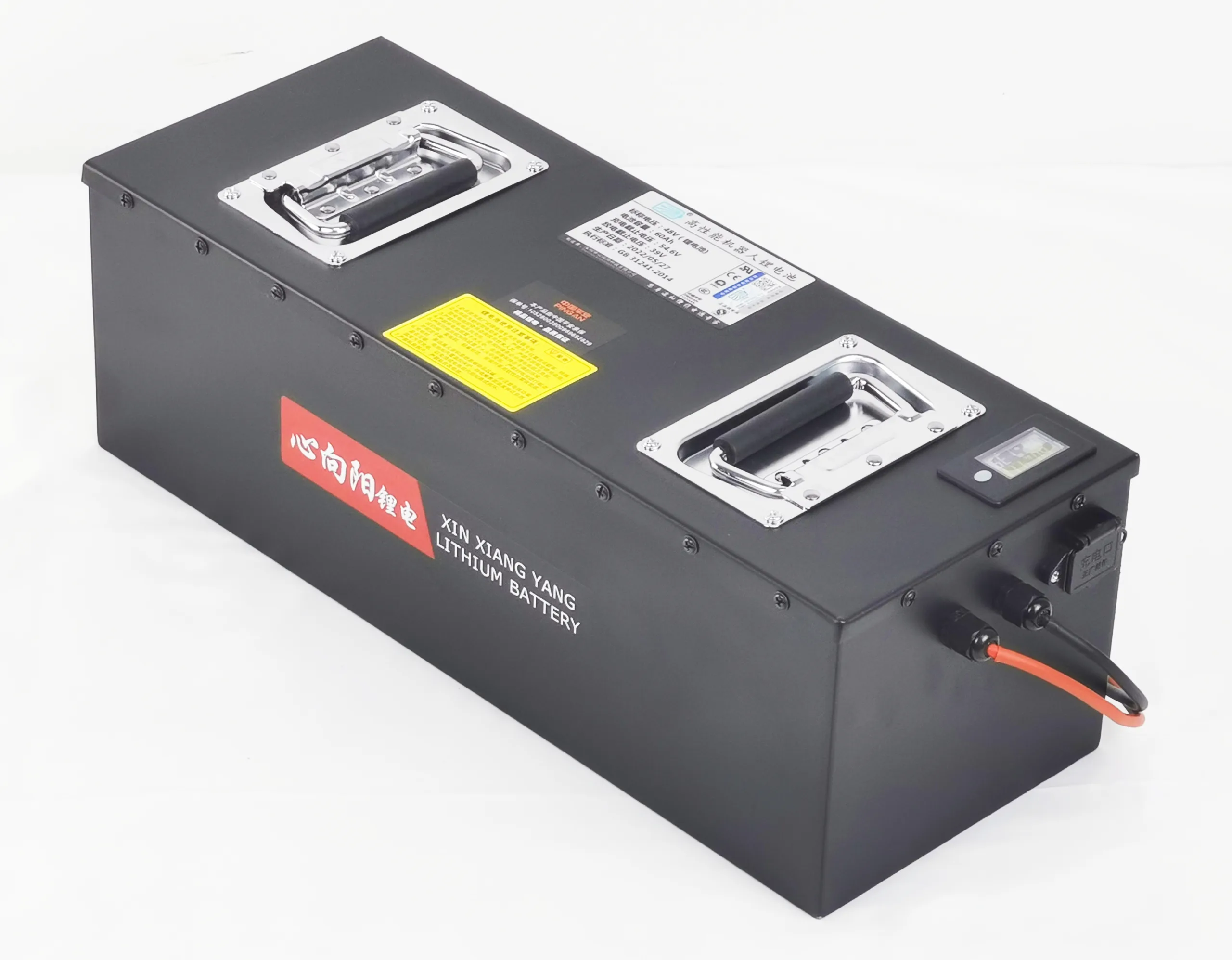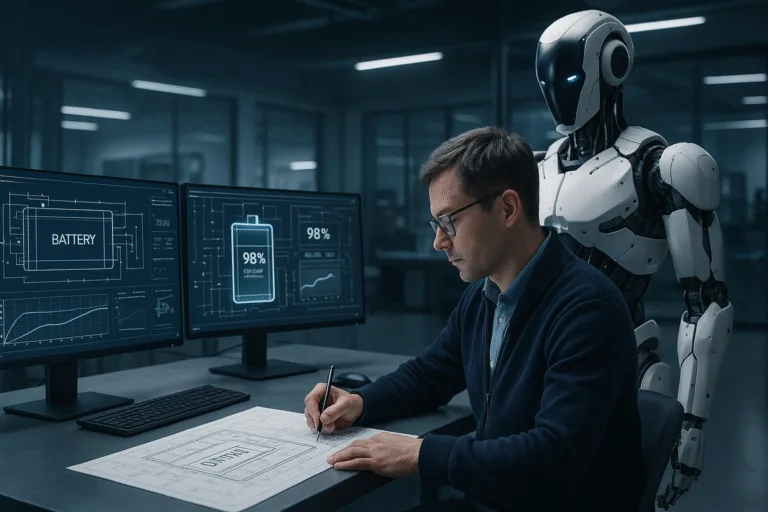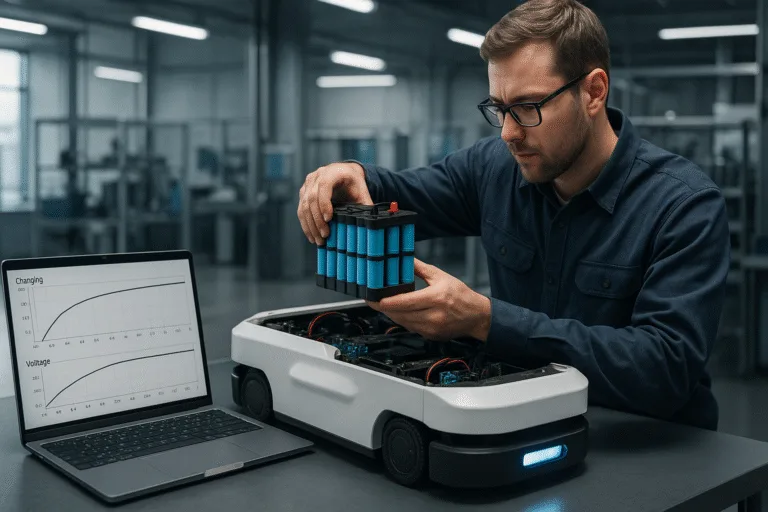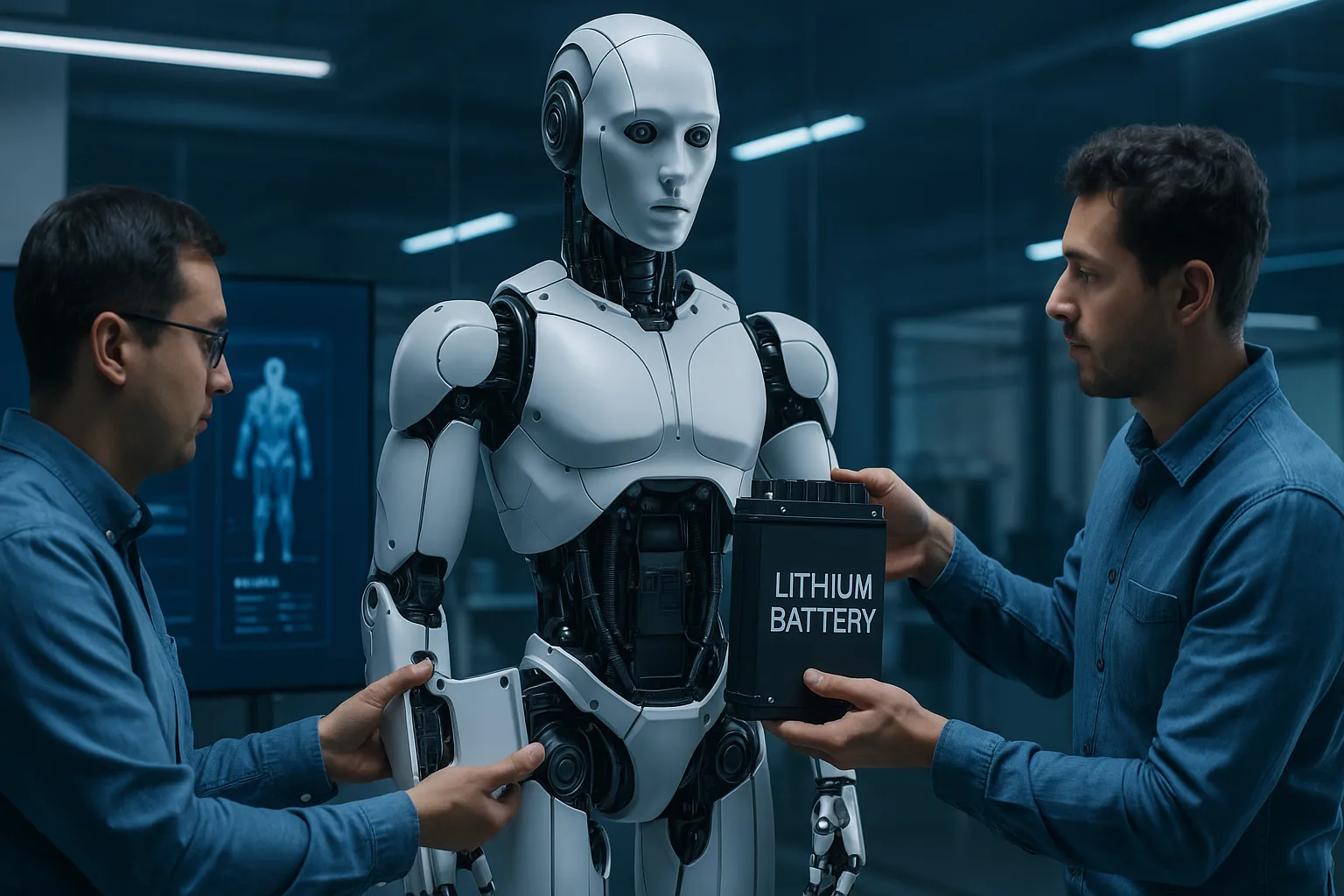
Humanoid robots fail when power is wrong. Teams overheat packs, miss runtime, or add weight. I solve this with clear choices on chemistry, safety, and size.
Choose the battery by use-case, not hype. Match chemistry to runtime and power. Design the pack for safety first. Keep mass low and centered. Validate with standards. Plan service and data from day one.
I learned this the hard way. A client rushed a demo. The robot fell after 27 minutes because the pack sagged under peak knee torque. I rebuilt the pack, moved weight to the torso, and hit two hours.
What are the latest innovations in humanoid robot batteries?
New cells look exciting, but I check what ships now. I want higher energy, safer packs, and better data.
Real gains come from high-silicon anodes, smarter BMS, better thermal paths, and modular packs. Solid-state is coming, but pilots are limited. I use production-ready tech now and design for future drop-ins.
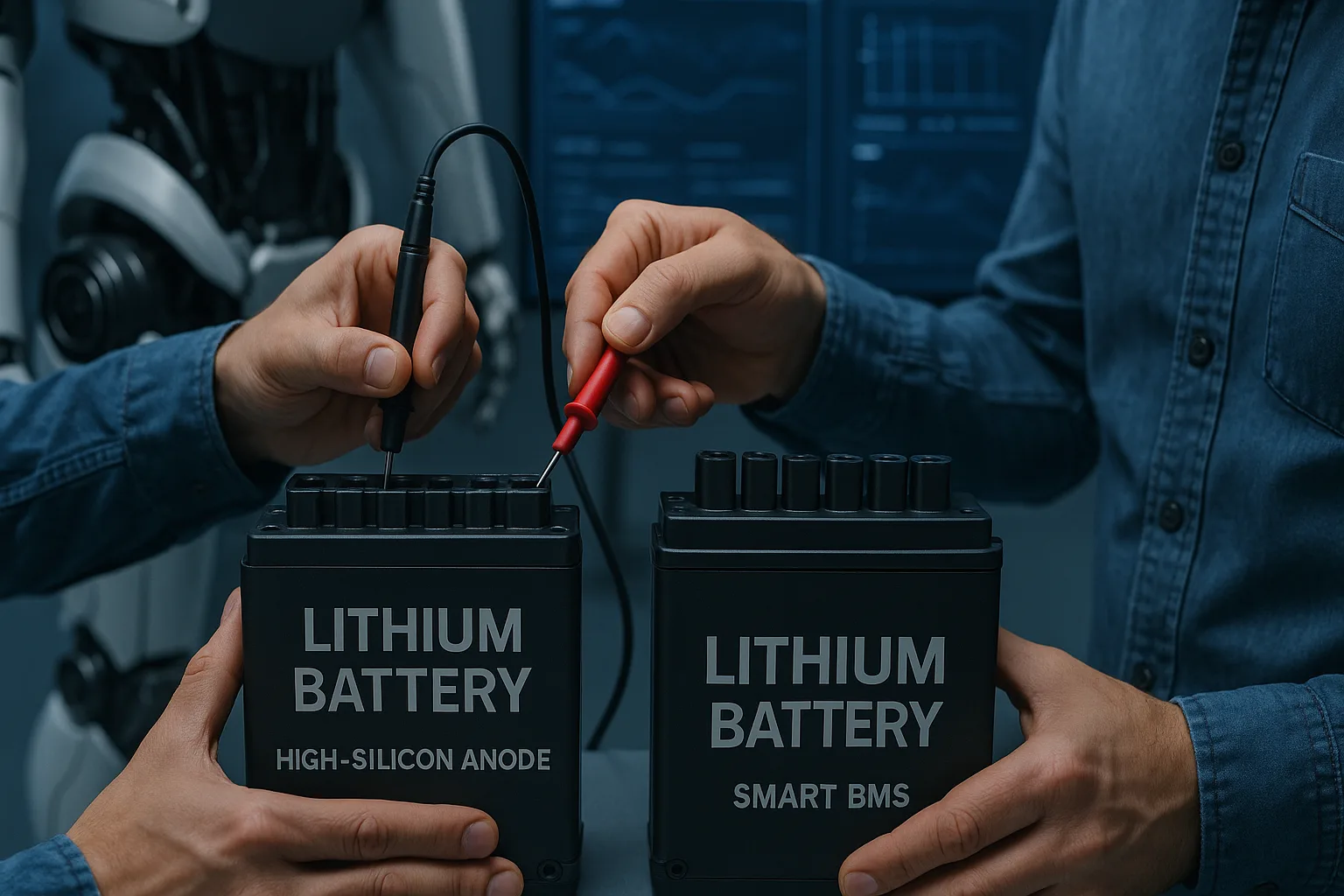
Where I see real value
- High-silicon anodes (NMC/NCA)1tps://www.lifepo4-battery.com/News/advantages-disadvantages-of-nmc-battery.html)2/NCA): More energy per kg, careful swelling control.
- Semi-solid and dry electrodes3: Cleaner lines, lower cost risk long term.
- Advanced BMS4: Cell-level telemetry, CAN/CANopen or Ethernet, SOH/SOC models, abuse logging.
- Thermal design5: Graphite pads, vapor chambers, parallel heat paths away from torso sensors.
- Modular packs6: Fast swap trays in the back or hip, blind-mate connectors, keyed rails.
- Predictive charging7: 80% target charge for life, quick top-ups during tasks.
Readiness snapshot
| Innovation | Benefit | Risk/Limit | TRL* |
|---|---|---|---|
| High-Si anodes in NMC | +10–20% energy | Cycle fade if mis-managed | 7–8 |
| Semi-solid electrodes | Cost and quality potential | Supply maturity | 6–7 |
| Solid-state (oxide/sulfide) | Safety, energy promise | Scale, fast charge | 4–6 |
| Smart BMS + digital twin | Uptime, fewer surprises | Model tuning | 7–9 |
| Swappable pack mechanics | Zero-downtime shifts | Seals, wear, ESD | 8–9 |
*TRL = technology readiness level (rough guide)
How do solid-state batteries compare to lithium-ion in robotics?
People ask me if solid-state is ready. I say: plan for it, but do not wait.
Solid-state may raise energy and safety, but today’s humanoids ship faster with proven Li-ion. I design interfaces and space so a future solid-state pack can fit without changing the robot.
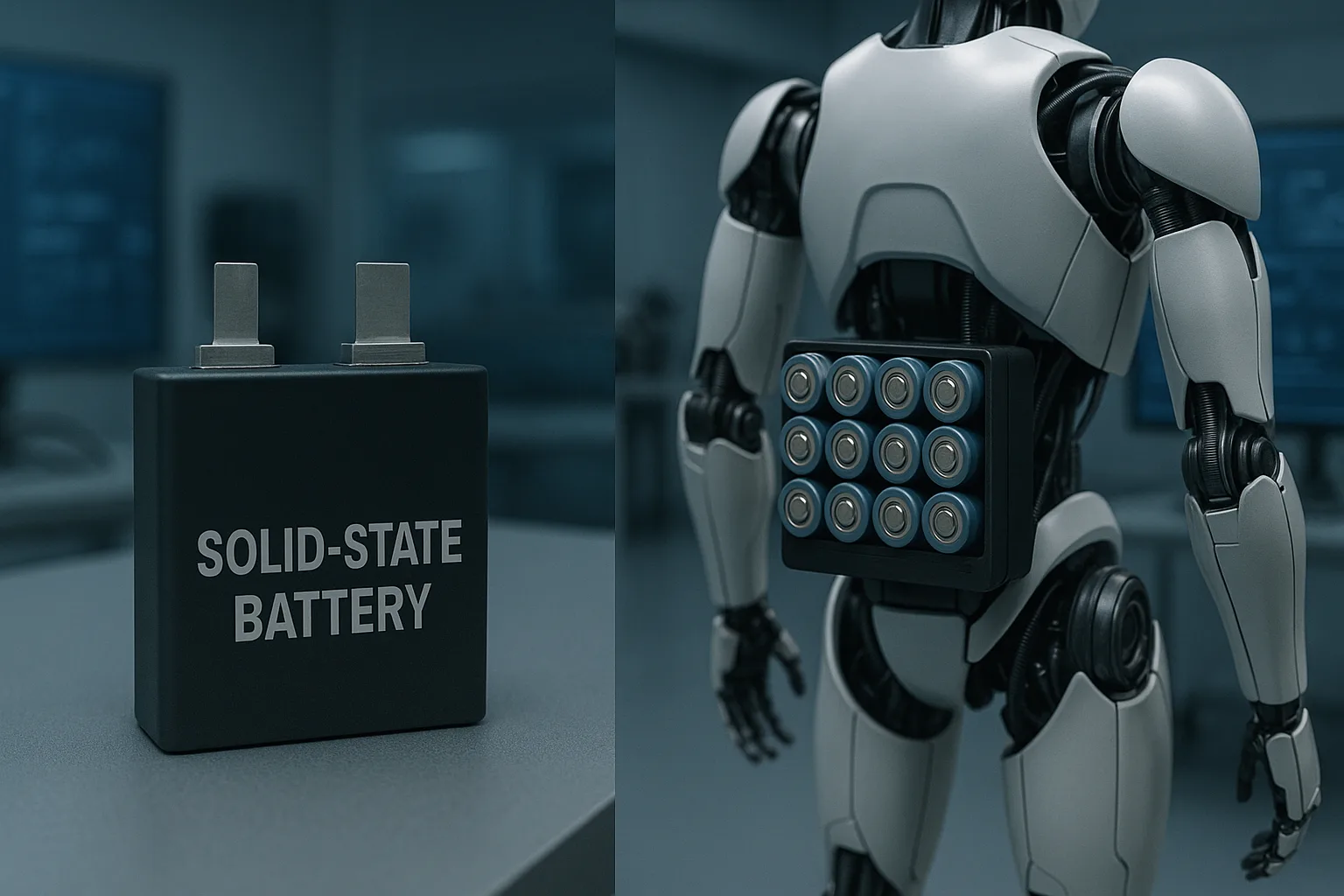
Side-by-side view
| Factor | Solid-State (future) | Lithium-Ion (today) | My take |
|---|---|---|---|
| Energy density | Potentially higher | High with NMC; good with LiFePO48 | Use Li-ion now; keep headroom |
| Fast charge | Still limited | Mature to ~1–2C with care | Plan duty cycles, not sprints |
| Safety | Improved abuse tolerance | Safe with robust pack design | Design to pass worst-case |
| Low-temp performance | Chemistry-dependent | LiFePO4 stable; NMC better power | Pick by climate and job |
| Cost and supply | Unclear today | Strong global supply | Protect BOM and lead time |
What I do today
- Reserve extra volume for future cells.
- Set connector and cooling to handle higher Wh later.
- Lock software to cell-agnostic BMS messages.
What safety standards are important for robot battery development?
Safety is not optional for humanoids. I build to pass on the first try.
I use IEC 62619 or UL 2271 for packs, IEC 62133-2 for cells or small packs, UN 38.3 for transport, and a full risk process with ISO 12100. For robots, I align with ISO 10218/13482.
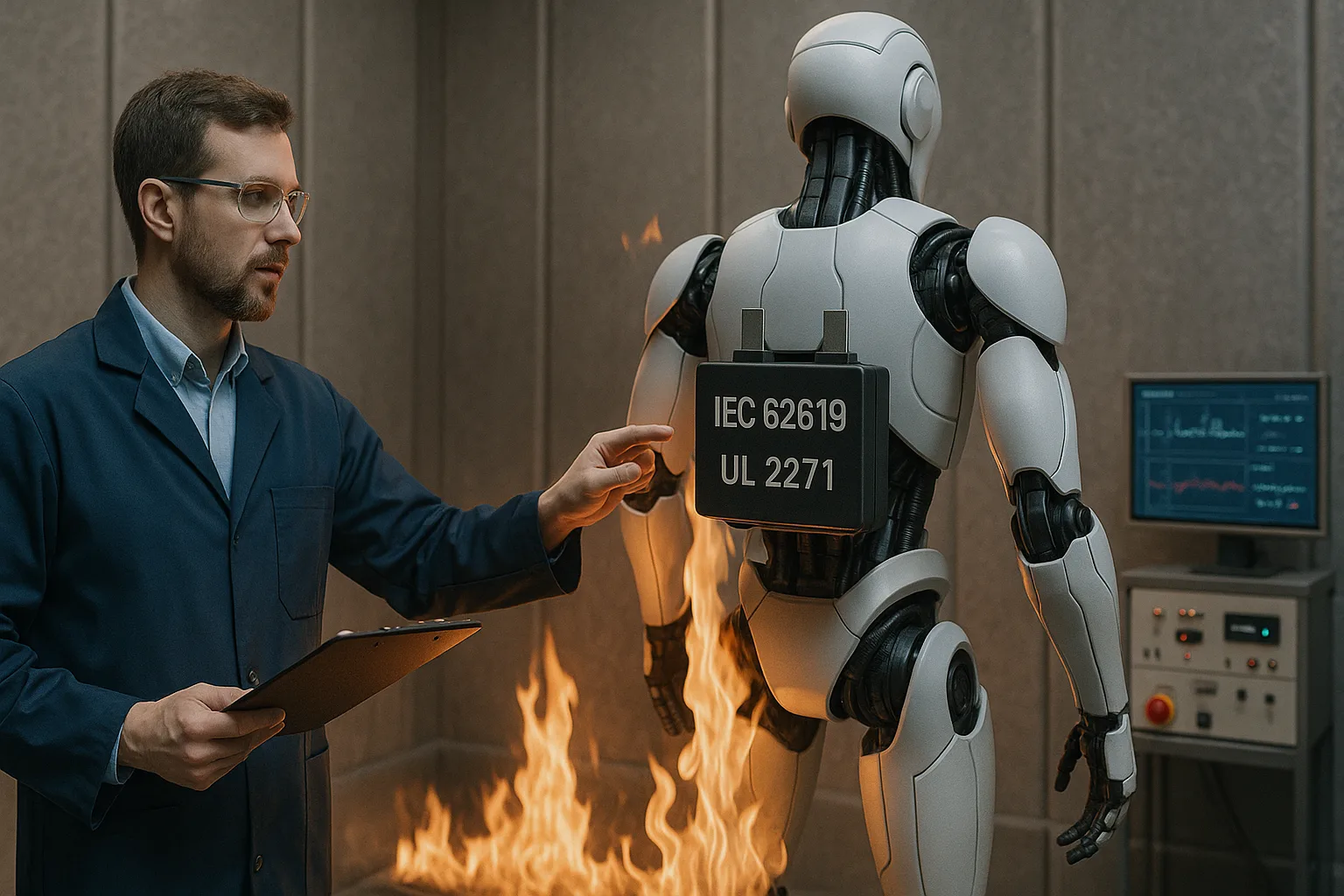
My compliance map
| Standard | Scope | When I apply it |
|---|---|---|
| IEC 62619 | Industrial Li-ion packs | Most humanoid packs in production |
| UL 2271 | Light-EV/robotic packs | North America, field robots, ride-on or mobile cases |
| IEC 62133-2 | Portable Li-ion cells/packs | Cell and small module validation |
| UN 38.3 | Transport tests | Every pack and sample shipment |
| IEC 62368-1 | ICT/AV electronics safety | Chargers, controllers in the battery enclosure |
| ISO 12100 | Risk assessment | System FMEA, misuse cases, maintenance |
| ISO 10218 / 13482 | Industrial / service robots | System integration and safeguards |
| IEC 61508 | Functional safety | When safety functions depend on battery feedback |
Design steps9 I never skip
- Abuse tests: nail, crush, thermal, short, drop (with containments).
- Vent direction and fire breaks away from compute and harness.
- Clearances, creepage, and fusing near high-current rails.
- Service interlocks and HVIL. Lockouts for swaps.
Which battery chemistries offer the best performance for humanoids?
No single chemistry wins all jobs. I pick for the mission.
NMC gives high energy and power in tight frames. LiFePO4 gives long life and stable safety with more weight. LTO is ultra-robust but heavy. I balance runtime, mass, and cycle cost per hour.
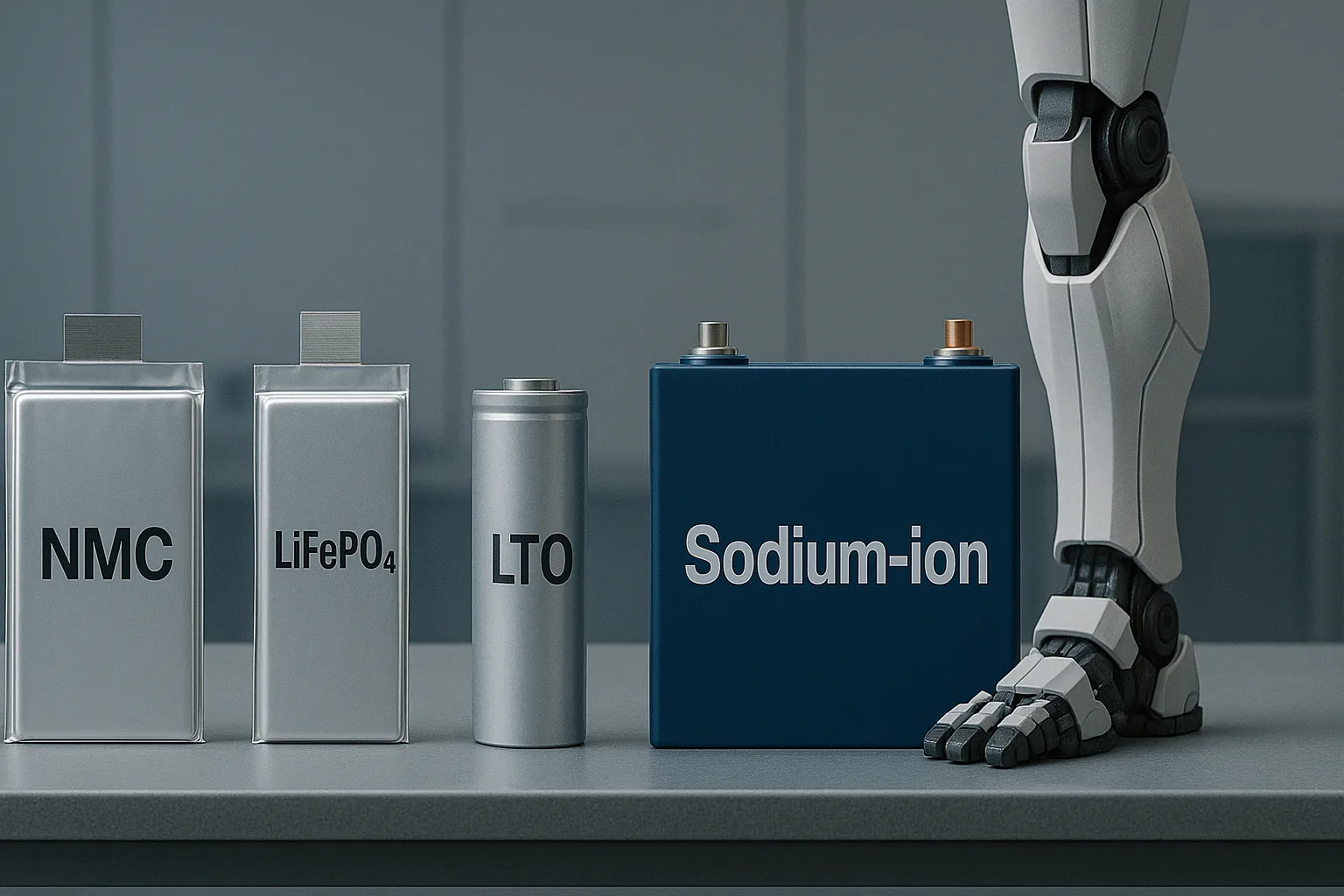
Quick comparison for humanoids
| Chemistry | Energy (Wh/kg) | Power | Cycle life* | Safety | Notes |
|---|---|---|---|---|---|
| NMC | High | High | 800–1500 | Good | Great for compact torsos, careful thermal guard |
| LiFePO4 | Medium | Medium | 2000–4000 | Very good | Easiest compliance path, more mass |
| LTO10 | Low | Very high | 5000–10000 | Excellent | Fast charge, harsh duty, weight penalty |
| Sodium-ion11 | Low–Medium | Medium | 1000–2000 | Good | Cost-driven, growing supply, larger volume |
*Typical ranges with good management; use as planning guides.
How I decide
- Short, agile demos: NMC high-Si cells, tight pack, active cooling.
- Daily shifts with swaps: LiFePO4 modules, simple cooling, long cycle life.
- Cold or abuse-heavy: LTO when weight is less critical.
- Cost-sensitive pilots: Sodium-ion if volume allows.
How does battery size impact humanoid robot design and mobility?
Battery size sets how the robot moves. It sets joint torque, step time, and fall risk.
A lighter, centered pack improves gait and balance. A heavier, lower pack improves stability but reduces agility and jump power. I keep mass close to the torso COM and within hip width.
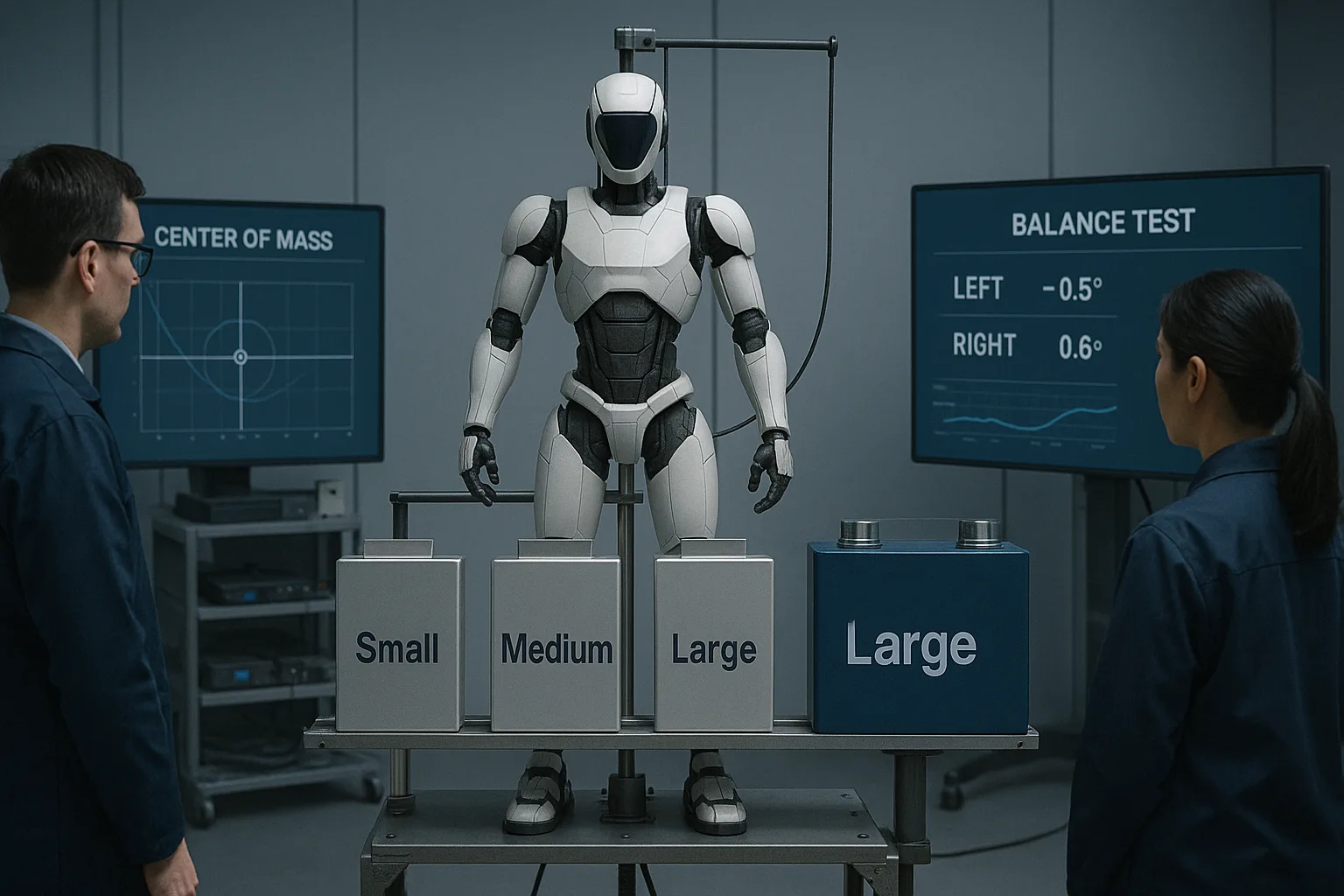
What changes when weight grows
| Design element | If battery mass increases | What I change |
|---|---|---|
| Balance | Slower recovery | Wider stance, better ankle control |
| Hip/knee torque | Peaks rise at lift-off | Higher-power cells or thicker busbars |
| Thermals | More heat soak | Dual heat paths and vented covers |
| Run time | May rise, but not linearly | Improve drivetrain and motion plan |
| Service | Harder swaps | Rails, handles, blind-mate guides |
My placement rules
- Keep pack center within the torso COM box.
- Limit pack thickness so elbows and arms clear during turns.
- Route HV on the back side; route comms on the front side.
- Design swap in under 60 seconds. No tools for field teams.
A short story
I once moved a 4.8 kg pack 30 mm up and 18 mm forward. The robot stopped toe-catching on stairs. Energy use dropped 6%. The change took one plate and two brackets.
Conclusion
Pick chemistry for the job. Design for safety. Keep mass centered. Leave room for the future.
-
Explore how high-silicon anodes enhance energy density and performance in batteries. ↩
-
Discover why NMC is favored for its high energy and power density in compact designs. ↩
-
Learn about the advantages of semi-solid and dry electrodes for cleaner and cost-effective battery production. ↩
-
Discover how advanced BMS improves battery performance and safety through real-time monitoring. ↩
-
Understand the importance of thermal management in enhancing battery safety and efficiency. ↩
-
Find out how modular packs facilitate quick replacements and maintenance in robotic applications. ↩
-
Explore how predictive charging can extend battery life and optimize charging cycles. ↩
-
Learn about the long cycle life and safety features of LiFePO4 batteries for various applications. ↩
-
Discover the critical design steps that ensure safety and reliability in battery systems. ↩
-
Understand the unique advantages of LTO batteries, especially in demanding environments. ↩
-
Explore the emerging sodium-ion technology and its implications for cost-effective energy storage. ↩

